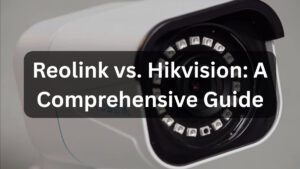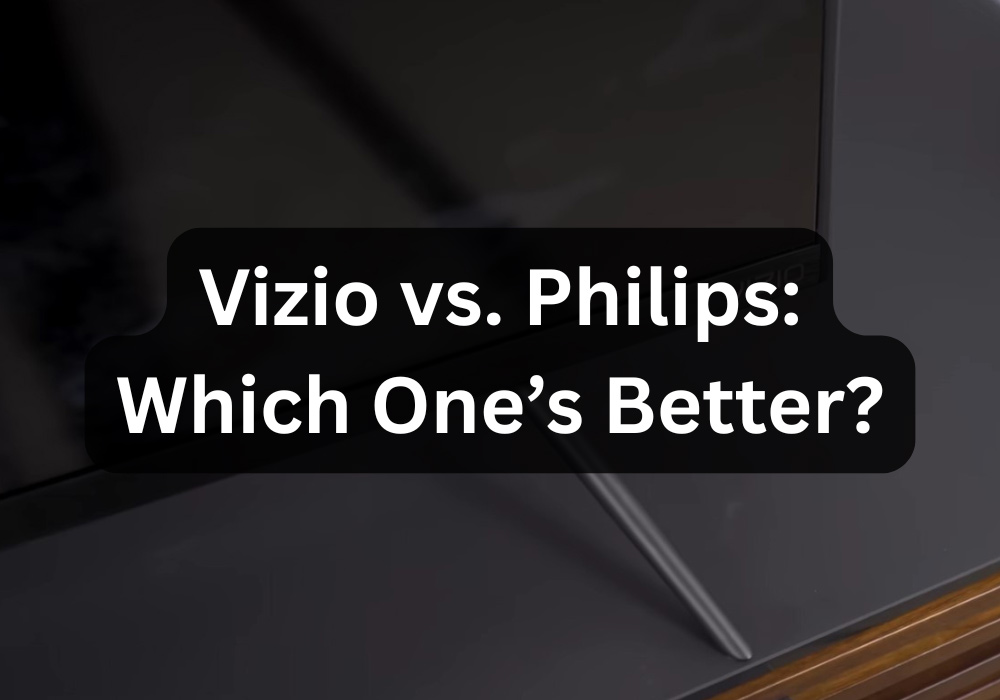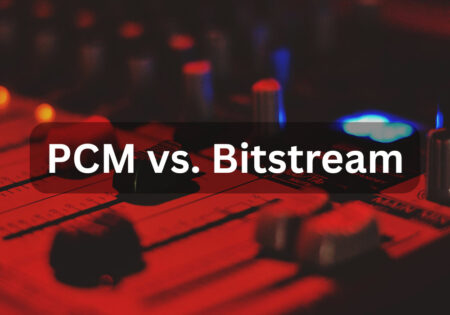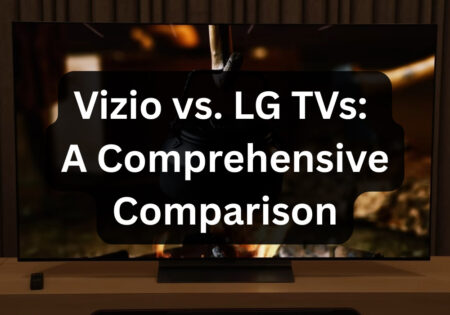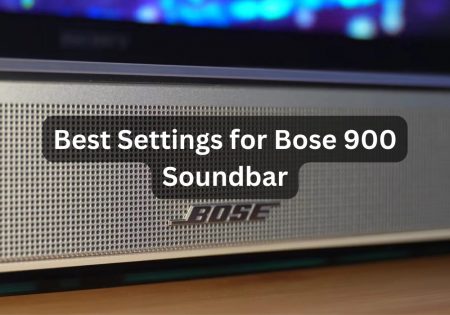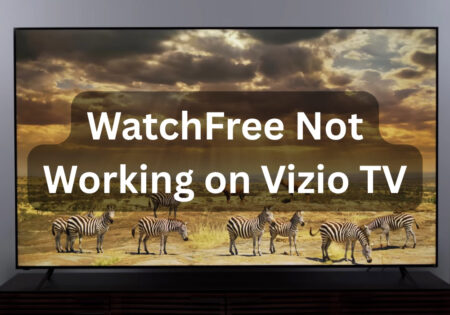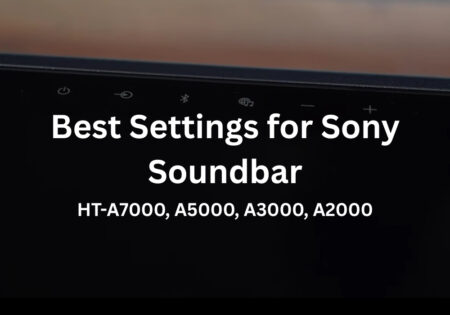Comparing Philips vs. Vizio TVs, help you decide which brand comes with better value for money. In this article, I’ll explain how these two brands differ in picture quality, smart operating system and platform, gaming performance, and more, so you can choose more intelligently.
Philips or Vizio, Which Is Better? (Quick Answer!)
| Category | Philips 🌈 | Vizio ⚡ | Winner 🏆 |
|---|---|---|---|
| Picture Quality | OLED, Ambilight, cinematic blacks | Quantum Dot, super-bright, vivid HDR | Philips (OLED edge) |
| Smart Platform | Android TV, flexible apps, Google focus | SmartCast, fast, built-in casting | Philips (app variety) |
| Audio | Bowers & Wilkins on premium, immersive | Loud, Dolby Atmos, best with soundbar | Philips (built-in sound) |
| Gaming | Good on OLED, immersive, slower response | HDMI 2.1, 120Hz, VRR, great for gamers | Vizio (gaming beast) |
| Design | Sleek, premium, Ambilight glow | Simple, sturdy, blends in quietly | Philips (premium look) |
| Price/Value | Premium-priced, luxury feel | Budget-friendly, great feature set | Vizio (best value) |
| Best For | Movie lovers, design-focused buyers | Gamers, budget hunters, bright rooms | Tie — depends on you! |
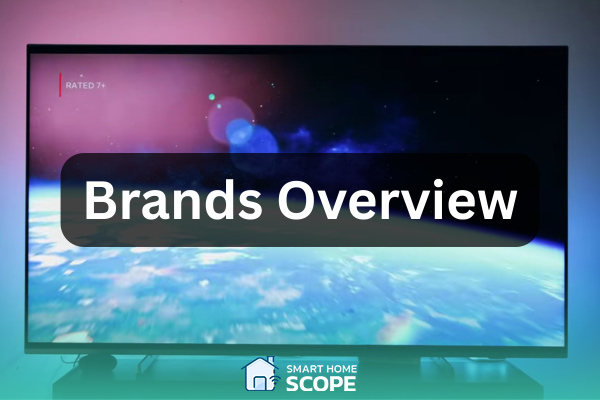
Philips vs. Vizio: Brands Overview
Philips: Legacy, Innovation, and European Craftsmanship
Philips isn’t just a brand; it’s a legacy. Founded in the Netherlands in 1891, the company has been a major player in the consumer electronics world for years. It’s not just limited to TVs; it has also branched into areas like medical devices and lighting. Philips TVs have a few unique features that set them apart.
What sets Philips apart is its unique Ambilight technology. This feature projects ambient light from the back of the TV onto the wall, making watching movies or playing games in dimly lit spaces more immersive. When I first saw one of these models in my showroom, I was surprised by how “broader” the picture seemed.
It’s interesting to note that Philips TVs are manufactured and distributed regionally around the world. In Europe and many international markets, TP Vision is responsible for design and manufacturing, while Funai Electric is responsible in North America. As a result, models available in one country may not be available in another, or may be of a different quality.
Despite these differences, Philips still adheres to modern, minimalist designs with a European feel. If you value elegance and sophistication, Philips’ high-end TVs tend to excel. The P5 Picture Engine in these models also significantly improves sharpness, motion, and color accuracy, something I noticed when watching live sports and streaming movies.
Vizio: American Efficiency with a Focus on Value
On the other hand, Vizio is an American company that has risen to the top of the competitive market at a rapid pace. Founded in 2002 in California, the brand quickly became known for making TVs that outperformed their price tag. I had an M-Series model in 2016 and was pleasantly surprised by its picture quality compared to more expensive brands.
Where Vizio TVs really shine is in their value engineering. It aims to bring professional features like 4K resolution, local dimming technology, and Dolby Vision support to the mid-range. In recent years, it has significantly raised the bar on picture quality by investing in quantum dot technology in its P-Series and MQX Series.
Another notable feature of Vizio is its proprietary SmartCast platform. It was buggy and unstable initially, but it’s now a relatively smooth and stable smart interface that supports Apple AirPlay 2, Google Assistant, and Alexa.
Interestingly, Vizio was one of the first brands to use Full-Array Local Dimming (FALD) technology in its mid-range models, a win-win for improving contrast and black depth.
Also Read:
Vizio vs. Hisense
Alright, it’s time for our Philips vs. Vizio comparison to begin.
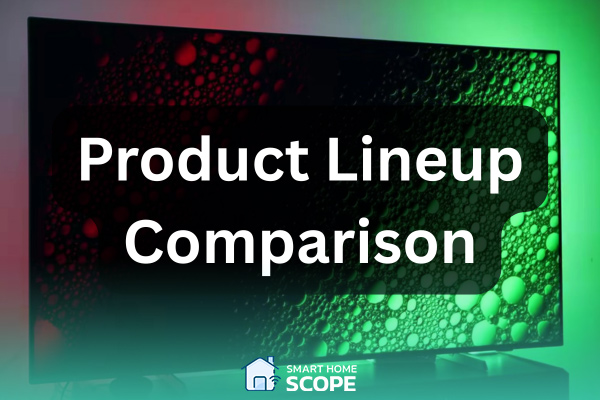
Philips vs. Vizio: Product Lineup Comparison
Entry-Level Models
If you’re on a budget, both Philips and Vizio have models under $400 that are great for casual viewing.
Philips’ budget TVs typically use simple LED panels and come with Android TV. They’re great for streaming content, but usually not very bright or powerful. The 4000 and 5000 series, which I’ve tested, are great for casual use but lack contrast and peak brightness.
Vizio, on the other hand, really excels in this price range. The D-Series and especially the V-Series offer picture quality that’s beyond expectations. Despite the low price, the V-Series offers 4K resolution, HDR support, and SmartCast, something that’s rare in this price range.
Vizio is a more affordable and well-equipped option in the budget category, if you’re looking for a second TV for the guest room or kitchen.
Mid-Range Models
Philips is making a serious leap in quality with the 6000 and 7000 series. These models have more powerful image processing and offer higher brightness.
On the other hand, Vizio takes the value equation very seriously with its M-Series (specifically the MQ6 and MQX models). These TVs are designed for high performance, with Quantum Dot technology, effective Local Dimming, and low Input Lag.
I played games on the M-Series myself, and the picture was very smooth, clear, and vibrant. In terms of HDR implementation, Vizio usually outperforms Philips in this range.
The Philips 7000 series is a good choice for those who want a cinematic experience with special lighting. But if picture quality, gaming, and HDR are your priorities, the Vizio M-Series is probably a smarter choice.
Premium Models
When it comes to high-end, flagship performance, Philips and Vizio have diverged.
Philips is taking the OLED world to a new level with its 8000 and 9000 series, offering a different picture level and sound quality.
These models feature OLED+ panels designed with the renowned audio company Bowers & Wilkins. The result? Eye-catching images with cinematic contrast, true-to-life blacks, and stunning detail. These models are a great option if you’re a movie buff who values a cinematic viewing experience.
Vizio, on the other hand, has focused on cutting-edge LED technology in the absence of OLED. The P-Series Quantum and especially the P-Series Quantum X are the true flagships of the brand.
These TVs have a maximum brightness of up to 3,000 nits, have 240 local dimming zones, and support HDMI 2.1, meaning they’re ready for next-gen gaming. I used the Quantum X for gaming and watching fast-action content. It’s truly outstanding in terms of clarity, color, and brightness.
Ultimately, the Philips OLED is a top-tier choice if you’re after perfect contrast, absolute blacks, and a cinematic experience. But the Vizio P-Series Quantum X is truly unbeatable if you’re looking for dazzling brightness, fast gaming, and vivid visuals for bright environments.
Vizio vs. Philips: Picture Quality
Let’s compare Philips vs. Vizio in terms of picture quality to see how they stack up.
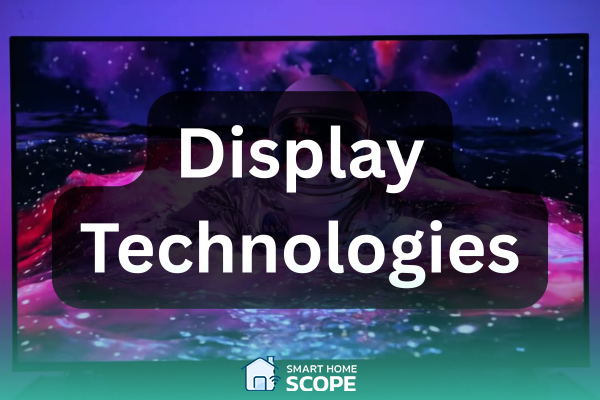
Display Technologies
Philips relies entirely on OLED technology in its premium models. In contrast, its mid-range and more budget-friendly models still use conventional LED panels.
The main advantage of OLED is that each pixel is self-emissive, so to display black, that pixel turns off. This creates infinite contrast and true black, without phenomena like “backlight blooming” or gray shadows in dark scenes. I watched the Philips OLED 806 model; it was one of the most cinematic experiences I’ve had outside a movie theater.
On the other hand, Vizio has taken a different approach, opting for advanced LED panels with Quantum Dot technology in its M and P series instead of OLED. While the black levels aren’t as deep as OLED, they offer incredibly high brightness, vivid colors, and detailed HDR content.
In particular, the P-Series Quantum X model has one of the highest brightness ratings of any consumer TV, making it ideal for use in bright rooms or daytime viewing.
The choice between the two comes down to your needs and environment: If you watch movies mainly in the dark at night and look for cinematic contrast, the Philips OLED is unbeatable. But if your environment is bright or high-brightness HDR content is more important to you, the Vizio Quantum LED panel is a powerful and cost-effective option.
I also recommend you read my TCL vs. Vizio guide since TCL has some interesting models with accessible prices.
Crave rich shadows in the dark? Philips OLED delivers. Need brilliance in bright spaces? Vizio’s Quantum LED shines.
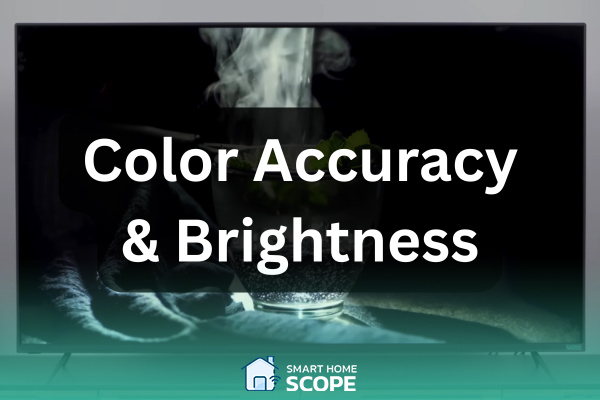
Color Accuracy and Brightness
Especially in its OLED series, Philips offers colors with a more natural tonality and closer to the cinematic atmosphere. The processor called P5 does a great job of controlling skin tones, shadow ranges, and detail in dark areas. This makes the final image very balanced and pleasing. Of course, Philips’ lower-end models sometimes lack brightness (especially when playing HDR content).
On the other hand, Vizio’s new TVs are usually set to vibrant and saturated colors. The image may seem exaggerated at first glance. Still, with a bit of calibration, the output image becomes truly stunning.
I personally had the experience of fine-tuning a Vizio P-Series model. I got a picture on par with TVs twice the price, especially when displaying HDR content. Another important point is that Vizio typically reaches over 1,000 nits of brightness on its higher-end models, essential for displaying true, impressive HDR.
Contrast and Black Levels
This is where Philips OLED wins. When watching dark scenes in movies like Batman or Stranger Things, you feel the depth and nuance only OLED can produce. There are no halos and grey patches.
Vizio fights back impressively with Full Array Local Dimming (FALD). The P-Series Quantum X has up to 792 dimming zones. You still get some blooming in high-contrast scenes (like subtitles on black backgrounds), but it’s controlled well.
Overall, Philips OLED is unbeatable if you want cinematic picture perfection in a dark room. However, Vizio’s Quantum models might be the better choice if you prefer punchy brightness and vibrant colors, especially in well-lit environments.
Smart TV Platforms
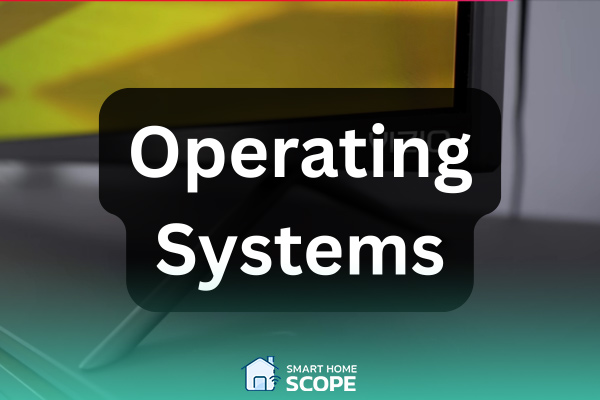
Operating Systems: Android TV vs. SmartCast
The Philips vs. Vizio battle here is all about comparing Android TV and SmartCast.
Philips uses Android TV (and, on newer models, a newer version of Google TV). For someone like me who values flexibility and customization, Android TV is a huge plus.
Thanks to the Google Play Store, you can install almost any app, from players like Kodi and VLC to niche, lesser-known streaming platforms that might not be available on more closed systems. The operating system gives users a lot of freedom to customize their TV experience to their exact needs.
Vizio, on the other hand, uses its own proprietary operating system called SmartCast. It has a more straightforward, more focused interface and some limitations. For example, there’s no app store, so you’re limited to the pre-installed apps (like Netflix, Disney+, Hulu, etc.).
Of course, a big plus for SmartCast is its support for Chromecast and Apple AirPlay 2. This means you can easily cast content from your phone or tablet to your TV, whether for YouTube or watching Instagram Live on the big screen. For me, these seamless sharing features are one of the great things about SmartCast.
Overall, the Philips Android TV is a better choice if you’re looking for more flexibility and various apps. But if you’re looking for a simple interface and fast mobile streaming, Vizio with SmartCast could be a good option.
Philips serves up boundless apps and freedom with its Android TV platform; Vizio’s SmartCast favors swift streaming and elegant simplicity.
App Availability and User Interface
When it comes to app diversity, Philips’ Android TV is second to none. Whether you’re an anime lover who’s a Crunchyroll fan or a sports fan who needs ESPN+, you’ll likely find everything you need in the Google Play Store.
The interface has also gotten smarter and more efficient with the introduction of Google TV; you’ll now see more personalized suggestions, better content sorting, and deeper integration with Google Assistant.
Vizio’s SmartCast, on the other hand, is also fast and has become simpler and more intuitive over time. The addition of the WatchFree+ live streaming hub is a nice feature for those who don’t have cable TV. But if you’re looking to install specific apps and tinker with the details, SmartCast can be limiting.
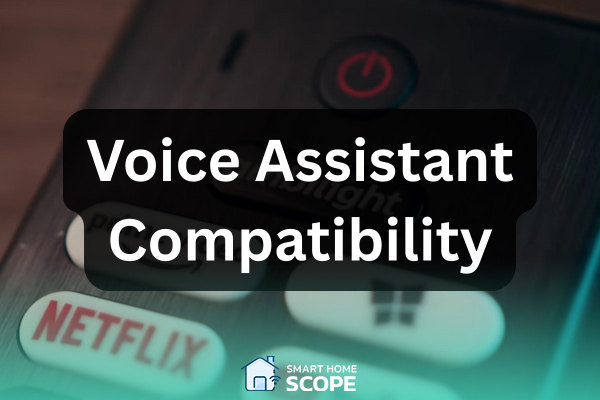
Voice Assistant Compatibility
Thanks to its Android TV, Philips is integrated directly with Google Assistant and can also work with Amazon Alexa via peripherals. I’ve used my voice to open apps, control content, and even dim or brighten my smart home lights multiple times; it’s all very smooth and lag-free.
But with Vizio, it’s a little different: SmartCast supports Alexa, Google Assistant, and even Apple HomeKit, but most of that voice control is done via your phone or smart speaker, not the remote. This can be clunky if you’re used to using the remote’s built-in microphone to send voice commands.
Philips vs. Vizio: Audio Performance
Built-in Speaker Quality
When it comes to sound quality, Philips’ high-end models, especially the OLED+ series, which is made in partnership with the legendary British company Bowers & Wilkins, are heads and shoulders above the rest.
I tested one myself; the sound was rich and layered, and the dialogue was crystal clear, even in busy, exciting scenes. There was a powerful bass that conveyed the impact of the sound well without the need for a subwoofer.
Philips’ more budget-friendly models, however, stick more to the usual 2.0-channel standards. They have speakers with mediocre clarity in the midrange and weak low-end reproduction. This is fine for casual, everyday viewing, but in large spaces, the sound can sound a little thin and lifeless.
Vizio, however, takes a more practical approach. The V and M series speakers have good volume and clear dialogue, but there’s less detail and subtlety. The bass isn’t as strong, and there can be some distortion at high volumes. However, DTS support and virtual surround sound simulation are sufficient for everyday use.
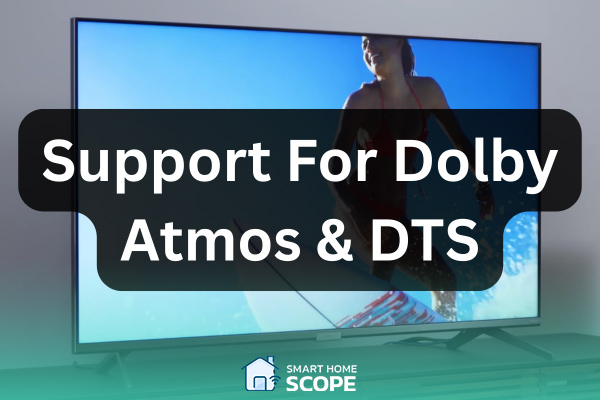
Support for Dolby Atmos and DTS
One of Vizio’s strengths in its mid-range and high-end TVs is its extensive support for Dolby Atmos and DTS:X. When you connect one of these TVs to an Atmos-enabled soundbar or receiver, the sound moves around and even above you.
I paired my Vizio M-Series with a Dolby Atmos soundbar and had a remarkably immersive listening experience. The sound seemed to travel like a wave from the corner of the room, creating a wonderful feeling.
Philips also offers Atmos on its OLED+ models. However, this support can sometimes be limited depending on the region and the software version (TP Vision or Funai). Finding a model that supports Atmos provides a deeply immersive audio experience, especially when combined with Ambilight, which extends the sense of space and sound beyond the TV’s frame.
Sound Customization Features
With Philips, you have many options for adjusting the built-in sound, from trim and bass to dialogue clarity, and even the ability to create personal profiles for different inputs. The more you watch, the more the TV uses AI to learn what settings work best for each piece of content, adapting to your listening preferences over time.
In contrast, Vizio has simpler sound settings. There are only a few presets, such as “Movie,” “Music,” or “Sports,” and the ability to tweak the equalizer is much more limited. It’s sufficient for everyday use and casual viewing. Still, you might feel a little lacking if you like to optimize the sound for a specific genre or game.
So, if you’re watching without a soundbar and looking for impeccable built-in sound quality, the Philips OLED+, in partnership with Bowers & Wilkins, will give you a fantastic experience. But if you use a soundbar or external speakers, the Vizio’s strong support for Dolby Atmos makes it a ready-to-use, plug-and-play option.
Going solo on sound? Philips OLED+ with Bowers & Wilkins delivers rich, built-in acoustics. Plugging into external gear? Vizio’s Dolby Atmos support makes it effortlessly seamless.
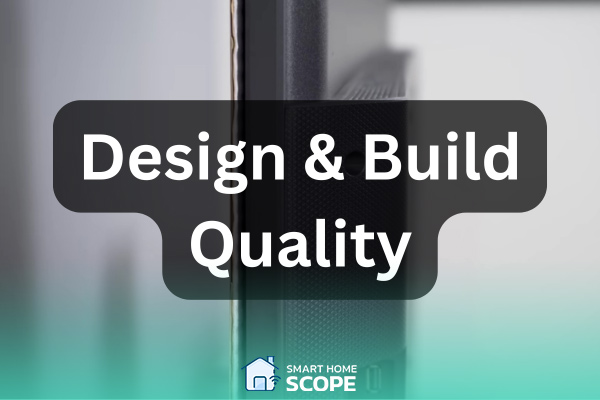
Design and Build Quality
Aesthetic Appeal
When it comes to design, Philips is a step ahead. Their mid-to-high-end models feature sleek metal frames, razor-thin bezels, and meticulous symmetry, conveying a sense of luxury at first glance. But the real standout is Ambilight, ambient lighting that harmoniously projects the image onto the wall behind the TV and creates a modern, futuristic look. This is the first thing people say about Philips when they see it; it’s more than just a simple TV.
Vizio, on the other hand, has a simple look. Its design is minimal, more about blending in with the decor than drawing attention. The bezels are slim, and newer models like the P-series have a brushed or dark matte finish that conveys a sense of solidity. But when they’re off, they don’t have the visual excitement that Philips has. In other words, Vizio prefers to be in the background, preferring eye-catching over effortless design.
Material Quality
Philips’ high-end models are made of premium materials, solid aluminum bases and polished edges that give them a luxurious feel. Even in the mid-range series, the build quality is so good that when I mounted the OLED 805 on the wall, I didn’t want to hide it behind a cabinet because it was so worth showing off.
On the other hand, Vizio has gone for plastic, even on some of its higher-end models. This cuts down on manufacturing costs and makes the TV lighter, but it doesn’t quite match Philips in terms of feel and appearance. The bezels on its more budget-friendly series are usually thicker, which can be annoying if you’re used to bezel-less displays.
Ultimately, if a sleek look and premium materials are important to you, even when the TV is off, Philips is the better choice. But if you’re looking for something simple, lightweight, and efficient that will blend seamlessly into your decor, Vizio will meet your needs.
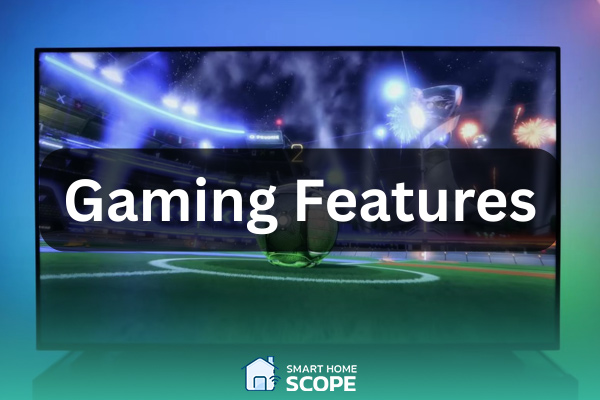
Philips vs. Vizio: Gaming Features
Refresh Rates and Input Lag
Philips offers a 60Hz refresh rate for its entry-level and mid-range series, which is more than adequate for everyday viewing. Still, its high-end OLED models also have a native 120Hz refresh rate, which is great for next-gen gaming.
In my experience, there’s a bit of input lag in the default mode, especially when you’re in the menu or Cinema mode; in fast-paced games like Call of Duty, if you don’t enable Game Mode, you’ll feel sluggish and have to fiddle with the settings a bit to get the TV to work properly.
But Vizio has nailed it. The MQX and P-Series Quantum X models are truly gamer-friendly, with 120Hz panels and sub-10ms input lag. They also have ALLM, which quickly puts the TV into game mode when you turn on your console.
I tried it with the Xbox Series X, and virtually no pauses or manual adjustments were required. You’ll definitely have a smoother, faster experience with Vizio for competitive matches or fast-paced shooters.
Support for Gaming Technologies
Vizio has gone the extra mile here. Its high-end models feature full-bandwidth HDMI 2.1 ports and support features like Variable Refresh Rate and AMD FreeSync.
This means the picture moves incredibly smoothly without tearing or lag when adventuring in “open world” games like Horizon Forbidden West or Elden Ring. Plus, with recent firmware updates, these features are incredibly stable and reliable.
But it’s a bit more complicated for Philips. Some of its high-end OLED models have HDMI 2.1 and VRR, but not all of them, especially in the US market, where Funai manages the brand. Some TVs may claim to have these capabilities. Still, their bandwidth is limited to 40 Gbps, or their VRR performance is unstable.
When I tested a 55OLED706, I enjoyed its excellent picture. However, during fast-paced action sequences, without lowering the resolution, it would experience frame drops, which was quite annoying.
Game Mode Performance
Philips also has a dedicated game mode that, when activated, significantly reduces input lag. Combining this with Ambilight makes for a truly immersive experience; I remember playing Cyberpunk 2077 in the dark, and the ambient lighting matched the scenes; I felt immersed in the game. But visual appeal doesn’t always equate to responsiveness, especially in competitive games where milliseconds matter.
This is where Vizio has the upper hand: its Game Engine+ software engine reduces input lag to near zero, and the game mode is activated instantly without manual adjustments. You can jump into your gameplay when you turn on the TV.
In short, if you’re looking for a lag-free, competitive experience, Vizio is the more logical choice, with its HDMI 2.1 ports, 120Hz refresh rate, and wide VRR. But if you’re more into immersive gaming and cinematic effects, especially with Ambilight, Philips can create that magical feeling that no other TV can replicate.
Chasing speed and precision? Vizio’s your ally. Craving atmosphere and cinematic flair? Philips, with Ambilight, conjures pure magic.

Pricing and Value
When it comes to price versus features, Vizio is the clear winner in the budget and midrange segments. For a few hundred dollars less than its competitors, you get access to technologies like 4K, Dolby Vision, and HDMI 2.1 ports, premium-level performance at a fraction of the price. Vizio is the best choice if you’re looking for an affordable TV with a solid display.
But Philips is more of a luxury experience, with OLED models or those with Ambilight costing more. That extra cost is for higher build quality, eye-catching design, better sound (especially on OLED+ models with Bowers & Wilkins), and that special lighting feel only Philips can deliver. Value here means a unique and lasting visual and emotional experience.
If getting more features for your dollar is your priority, Vizio is a wise choice. But the Philips is worth the extra cost if you’re looking to invest in a distinct visual and audio experience that goes well beyond the average standard.
Conclusion
As you saw in this Philips vs. Vizio guide, both Philips and Vizio offer great value, but from different angles. Philips shines with OLED, Ambilight, and premium design. In contrast, Vizio shines with its full range of features and unbeatable performance per dollar, especially for gamers. Choosing Vizio or Philips TVs comes down to your priorities.
